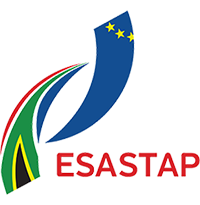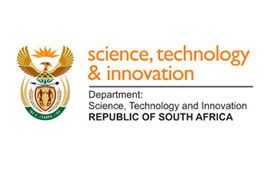Overview
Since the inception of democracy in 1994, the South African government’s main economic objectives have been to create jobs, eliminate poverty, and reduce inequality. To enable these goals, it has sought to maintain a stable macro-economic environment conducive to investment and sustainable, diversified economic growth, coupled with increased social spending.
The Reconstruction and Development Programme served as the first democratic government’s broad planning framework. Within this framework, the government recognised the role of STI in achieving these objectives. But in 1994, the newly elected government inherited a fractured society, a fiscally drained state, and an unsustainable resource-intensive economic growth path, which were mirrored in the country’s STI system. The pre-1994 period was characterised by a disconnect between science and society. The STI system was small, exclusive, and oriented towards the narrow agenda of the apartheid state.
The new democratic government set about addressing this situation through comprehensive policy development, which included the 1996 White Paper on Science and Technology (which introduced the concept of a national system of innovation), the 2002 National Research and Development Strategy, and the Ten-Year Innovation Plan for South Africa (2008-2018), along with various sectoral and cross-cutting STI strategies, for instance, for advanced manufacturing and human capital development. These policies and strategies aimed to transform the STI system to serve all South Africans, to counter fragmentation and the inadequate leadership of the system, to support economic growth, to expand and transform human resources and support for researchers, to build the required STI institutions, to expand knowledge infrastructure, and to increase innovation.
However, while South Africa’s post-1994 development planning has always recognised the importance of STI, the implementation of STI policy was often constrained by matters such as the gap between policy intent and resources, as well as broader socio-economic factors like the poor quality of public education. South Africa remains a dual economy with one of the highest inequality rankings in the world. The percentage of South Africans living below the poverty line (21.5% in 2014) remains very high. Access to essential public goods such as education, housing, nutritious food, and healthcare remains unequal, contributing to a sense of exclusion and disempowerment among large sections of South African society. The spatial distribution of poverty has not changed significantly since 1994. The extensive South African social protection programme, rather than structural economic change, lies at the heart of much of the poverty alleviation that has taken place.
The economy is characterised by a decreasing contribution of the manufacturing and agricultural sectors to the Gross Domestic Product (GDP) – resulting in the contribution of the services sector growing. While this shift towards services is acknowledged, it remains necessary for South Africa to strengthen sectors such as manufacturing, mining, and agriculture. Significant sections of the South African economy are foreign-owned (e.g., only eight of the Top 40 firms on the Johannesburg Stock Exchange are more than 75% owned by South Africans). The National Advisory Council on Innovation (NACI) reports that the economy currently hosts around 2.25 million small and medium enterprises (SMEs), of which 70% are in the informal economy, with 88% black-owned – a direct result of exclusion and high levels of unemployment. In addition, the 2009 Global Entrepreneurship Monitor Report placed South Africa in the lowest quartile of all the countries surveyed in two key measures: opportunity entrepreneurship and new firm activity.
The above economic situation was the environment in which the National Development Plan (Vision 2030) (NDP) was introduced in 2012 as South Africa’s long-term planning framework. At the heart of the NDP lies the vision to create a “virtuous cycle of growth and development,” with success “measured by the degree to which the lives and opportunities of the poorest South Africans are transformed in a sustainable manner.” The NDP sees STI playing a central role in the achievement of its goals. To illustrate, while progress will be required in several areas, according to the National Advisory Council on Innovation, three stand out: Increasing employment through faster economic growth, improving the quality of education, skills development and innovation, and building the capacity of the state.
The 1996 White Paper set out to construct a framework that would support a well-managed and properly functioning national system of innovation. South Africa was one of the first countries to formally adopt the NSI approach, and this approach has served the country well, resulting in the maturation of certain aspects of the NSI. New institutions have been established to build the architecture of the NSI, such as the Technology Innovation Agency (TIA), the National Research Foundation (NRF), and the National Intellectual Property Management Office (NIPMO). Furthermore, the NSI approach enabled a significant increase in knowledge-generation outputs and the promotion of public funding for STI. This is supported by NACI in their analysis of the performance of the NSI 1996-2016.
The 2019 White Paper on STI therefore proposes that the NSI concept be retained as an organising framework. However, several reviews show that the NSI approach has not yet translated into significant advances in innovation performance, or fulfilled its potential in contributing to solutions to South Africa’s development challenges. Therefore, now that certain aspects of the NSI have matured, government intends to build on that foundation and to optimise the functioning of the system so that the full benefits of STI can be reaped – not only for South Africa, but also for the continent. This would mean, among other things, enhancing the flow of information and resources through the NSI, enabling all actors to play their roles optimally, improving the interactions between actors and the coordination of their activities, and ensuring that the South African government as a whole follows an agreed agenda for the country’s innovation priorities. Fundamental to optimising the performance of the NSI is to incentivise the required behavior for all NSI actors. In this regard, the DSI has concluded a process to develop a new White Paper that spells out an NSI vision for the future.
In optimising the functioning of the NSI, the NSI approach also needs to be refined. The field of knowledge on innovation systems has grown significantly in the past 20-odd years and it now recognised that the NSI approach as applied during the early years was overly focused on firms and economically useful knowledge. In certain instances, this has led to environmental degradation and a lack of attention to the potential of innovation to improve government service delivery and alleviate poverty. The 2019 White Paper therefore now uses the opportunity to build on new insights into innovation systems to, for instance, support environmental sustainability and to contribute to inclusive development and improved government performance.
Key STI organisations
- ARC – Agricultural Research Council
- ASSAf – Academy of Science of South Africa
- CSIR – Council for Scientific and Industrial Research
- DSI – Department of Science and Innovation
- HSRC – Human Sciences Research Council
- MRC – Medical Research Council
- NACI – National Advisory Council on Innovation
- NIPMO – National Intellectual Property Management Office
- NRF – National Research Foundation
- SACNASP – South African Council for Natural Science Professions
- SANSA – South African National Space Agency
- South African government departments
- TIA – Technology Innovation Agency

